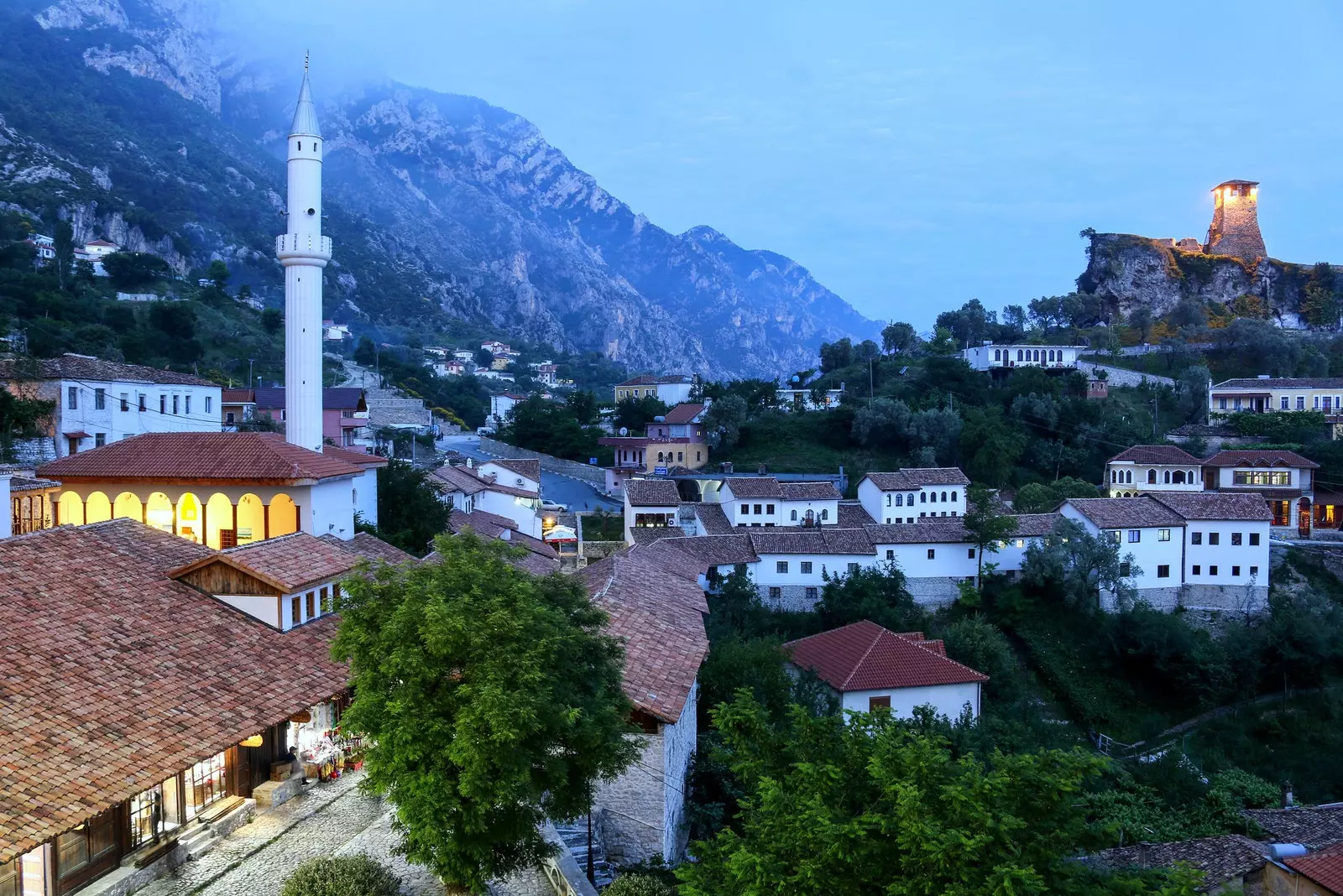
Krujë (or Kruja) in Albania
kruja It is only 30 kilometers from tyrant , the capital of Albanian , which translated into time means —and no, we are not exaggerating— an hour of driving . The last part of the road is the most attractive: while the road winds through mountains, and the vegetation becomes more and more dense, the landscape is transformed into a picture that is pure inspiration.
That's when you suddenly come across kruja : Almost unexpectedly, the historic city makes its appearance. at the top, over the top of the hill in which it rises, you can see the old castle , one of the icons of the place.
Only a few minutes later, already standing in front of its ancient walls, it will be when we take note of where we are. Kruja is 600 meters above sea level , which is only 70 kilometers away. On clear days, with luck, the Adriatic raises its hand and warns that he is there, in the distance, watching us from the coast.
While the Albanian red flag flies , with its two-headed black eagle, next to the castle, we decided that yes, this will be our first visit. A full-fledged history lesson is coming, the one you need to understand the how, when and why of this place that we step on today became such an important enclave for the country. Say no more… Let's start.
Before we start with the data and anecdotes, let's take a look at the views , who are tempting us. And it is that among a handful of scattered stones, remains of the old castle wall — built during the 5th and 6th centuries — and what remains of one of its towers, what is most striking are the small streets that twist there, under our feet , and that are lost in the puzzle of orange roofs that make up Kruja.
Around us, mountains and more mountains . They say that in the middle of winter, when the snow covers everything, the picture is overwhelming.
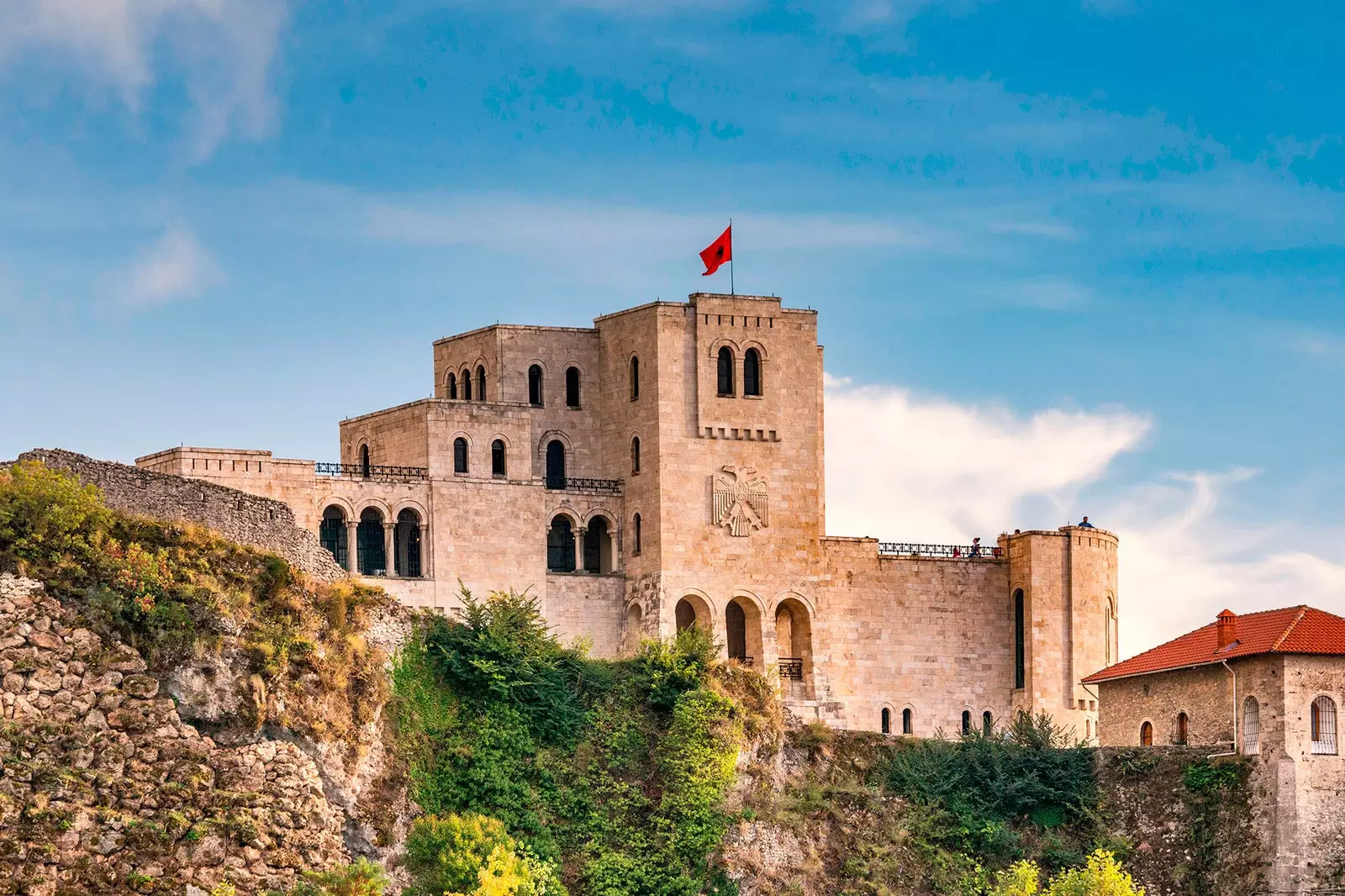
The new Skanderbeg fortification
And now, let's see: what is it about Kruja that makes it so important? It was precisely here that the great national hero was born, the character most admired by Albanians and who is honored in every corner of the country.
We talk about Gjergj Kastrioti , better known as Skanderberg , who also turned Kruja into a national symbol: after living his childhood in Turkey he returned to his hometown, becoming the country's leader in his golden age. But what he did to her be considered a true hero was that, precisely from Kruja, he ended up leading resistance against the Ottomans in the 15th century , a task that lasted for 25 years, until his death in 1468. In summary: he was a true idol for his compatriots.
Within the ancient walls there is also the museum that since 1982 , has been paying homage to the historical character. At the entrance, it is Skanderbeg himself who, along with his soldiers, greets us —yes, this guy was imposing, yes… -.
Paintings, sculptures, ceramics, historical notes and bibliography from that moment they tell the story, not only of Skanderbeg, but also of the time in which he lived. 15th century swords and Byzantine mosaics decorate the walls of the space that, either with a guide in Albanian or English, it is time to visit.
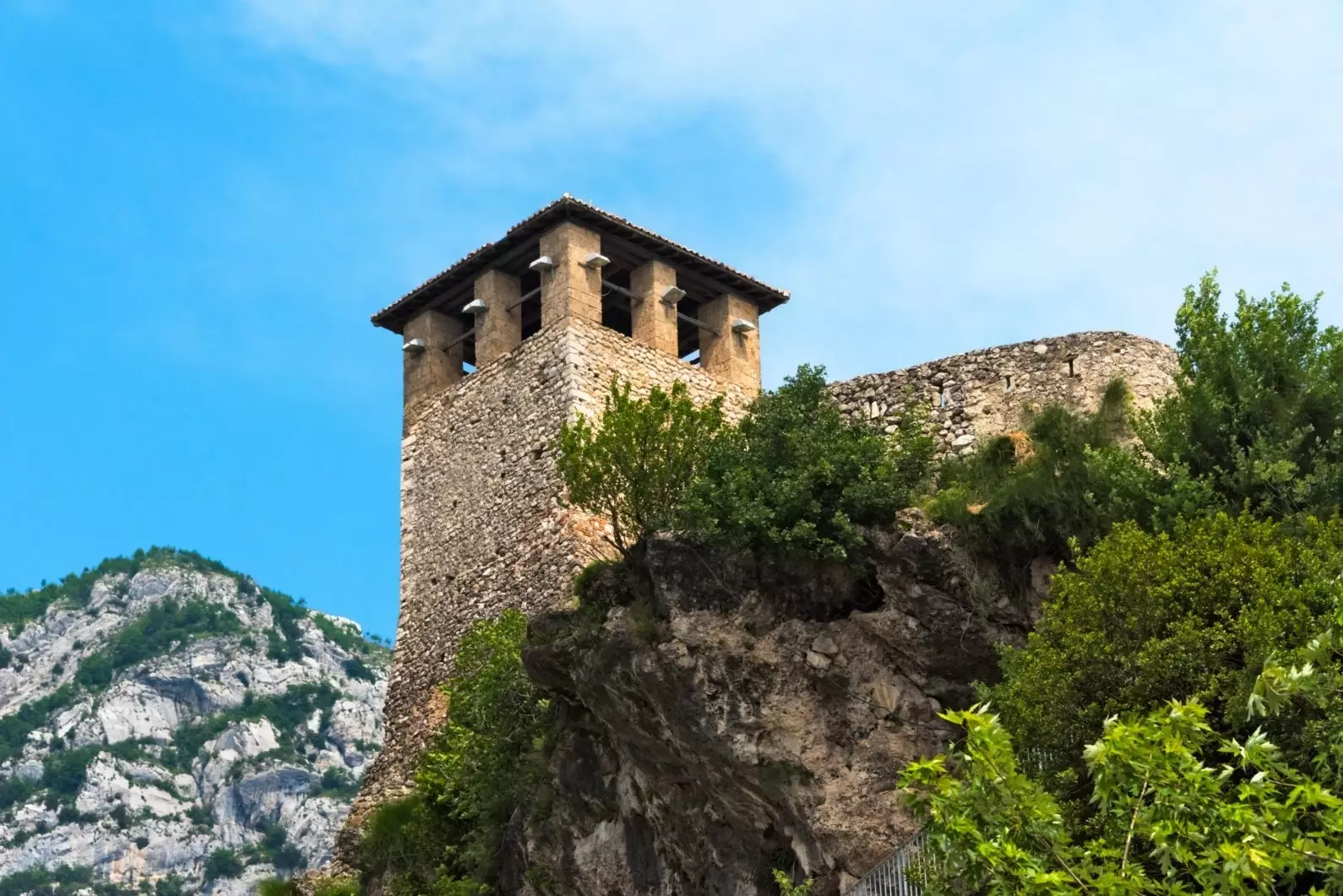
The old remaining tower of Skanderbeg Castle
A curiosity? The building that houses the museum, a modern construction which tries to imitate the form of an ancient castle, was designed by two architects: Pranvera Hoxha , which is none other than the daughter of former dictator Enver Hoxha , and her husband. an old house of 1764 , built by the family Toptani , houses the Ethnographic Museum of the city.
A LABYRINTH TO PASS
Back outside we decided to continue walking and retracing all the cobbled streets we found on our way. There are no cars around here: everything is calm . We continue inside the old citadel, where some families still live today.
A couple of cats play n our way just when we reach another of those places that our guide highlights as unmissable: the remains of an old hammam and, a little further on, a tea from the 18th century, which is still in operation today.
Well, "and what is a tea ?”, you may be wondering. well a small place of worship for practitioners of the bektashi branch of islam , which became popular in the area at the beginning of the 19th century. Despite the fact that it is a small enclosure, there is always a guard watching that everyone who visits it does so with respect. And is not for less: inside a kind of chapel decorated with carpets, embroidery and photographs, rest the remains of some of the last babas.
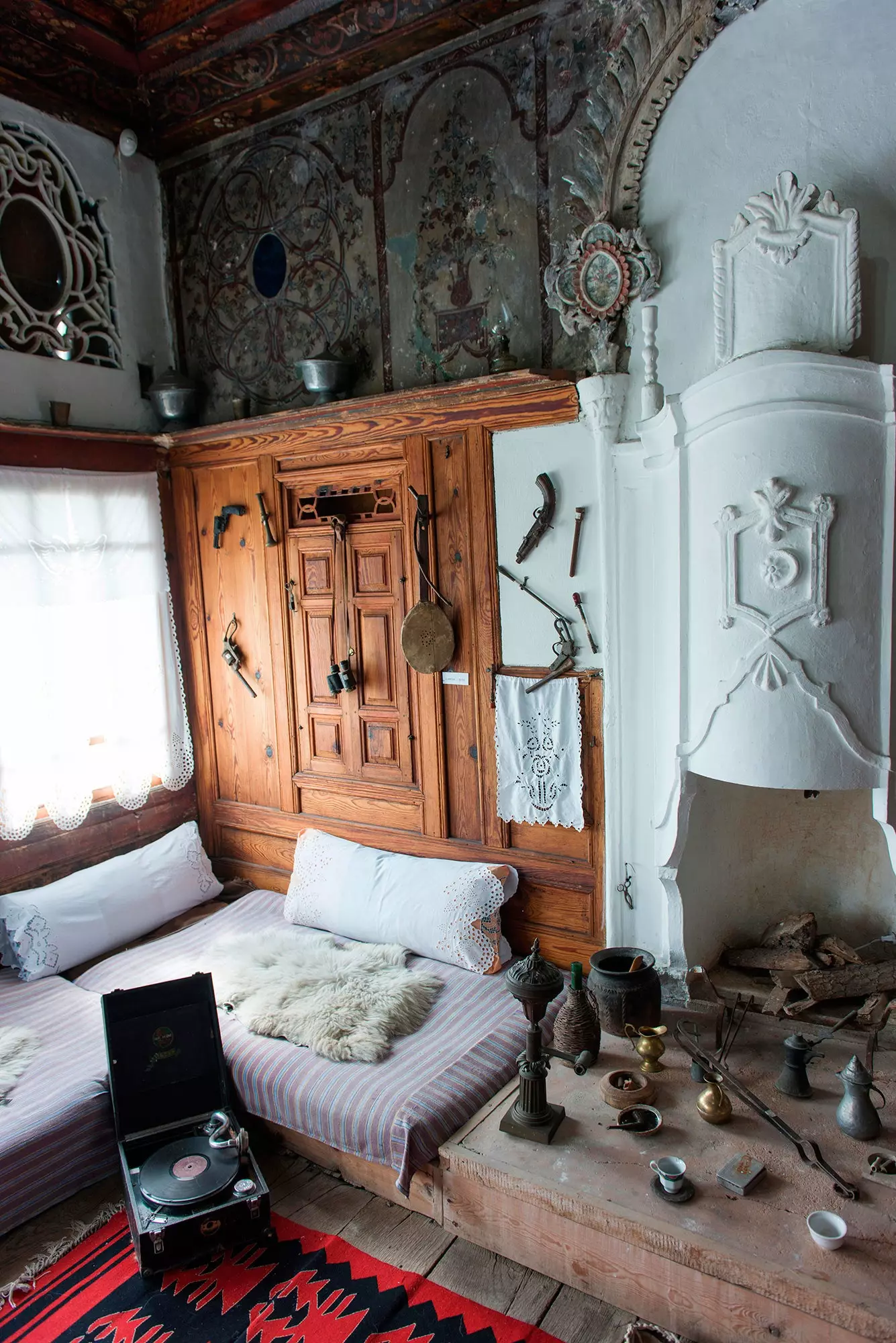
The Kruja Ethnographer
In his garden, by the way, grows an olive tree : as they say, it was Skanderbeg himself who planted it.
Controlled the monumental part, we decided that it is time to snack on something. Although Kruja has in its lower area, where it is the bazaar , with some more touristic restaurants such as the famous Hotel Panorama , we decided to go back up to the highest area of the castle: there, next to the old tower and almost attached to the monument itself, is —although it seems impossible— a small guest house . Is about Rooms Emiliano , an accommodation and restaurant business run by a family that has, generation after generation, nothing less than 300 years living there , in full monument.
Three young brothers are the ones who now run the business, which is most authentic. Friendly, attentive and especially helpful , they offer you one of their rooms the same -sleeping here is, even if they are austere rooms and without any type of luxuries, a privilege- that some good dishes of rich albanian recipes . All in the traditional way. All cooked with great care. And all, needless to say, of exquisite taste.
But, to add more curiosities to the experience, a detail: the restaurant not only has tables in small terraces with incredible views of the mountains and to the city, what's up? Also on the castle wall itself, literally on the stone, they have some of them arranged.
WE'RE GOING SHOPPING?
Although Kruja is a rather small town, there is something that is still missing: its beautiful bazaar, located on the street that leads to the castle.
Here comes the time to let yourself be carried away by the smells, by the sounds... Take a deep breath, close your eyes and, for a few seconds, feel that you have traveled in time and space to the Istanbul of several centuries ago . And it is that although the stalls that make up the bazaar were restored not too long ago, they have tried to make the essence of what it once was remain: after all, It is more than 400 years old.
It was here that free trade began to function, the place where some merchants and others began to exchange their goods according to the needs of each one.
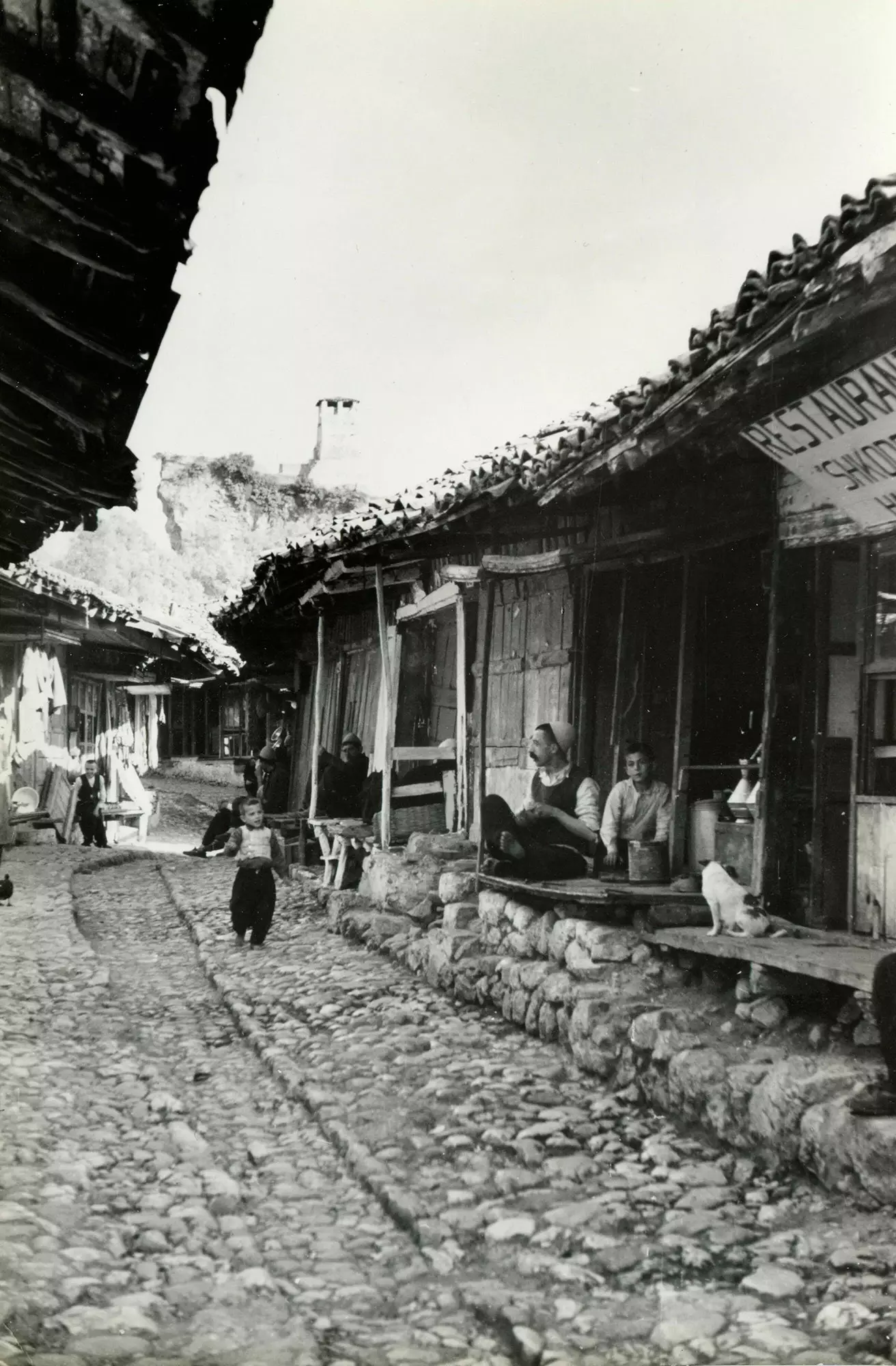
Kruja Bazaar in the 1940s
Now, in the XXI century, what we do is stroll through its cobbled streets at our leisure , without the burden of shopkeepers insisting that we look at or buy their products. We take a look at the exposed genre and we find from the souvenirs made in China more typical, to true jewels of craftsmanship: rugs, silverware, crochet products and even slippers made with felt . Along with all of them, a large number of antiques after which our eyes will undoubtedly go. How can we contain ourselves before this unfolding?
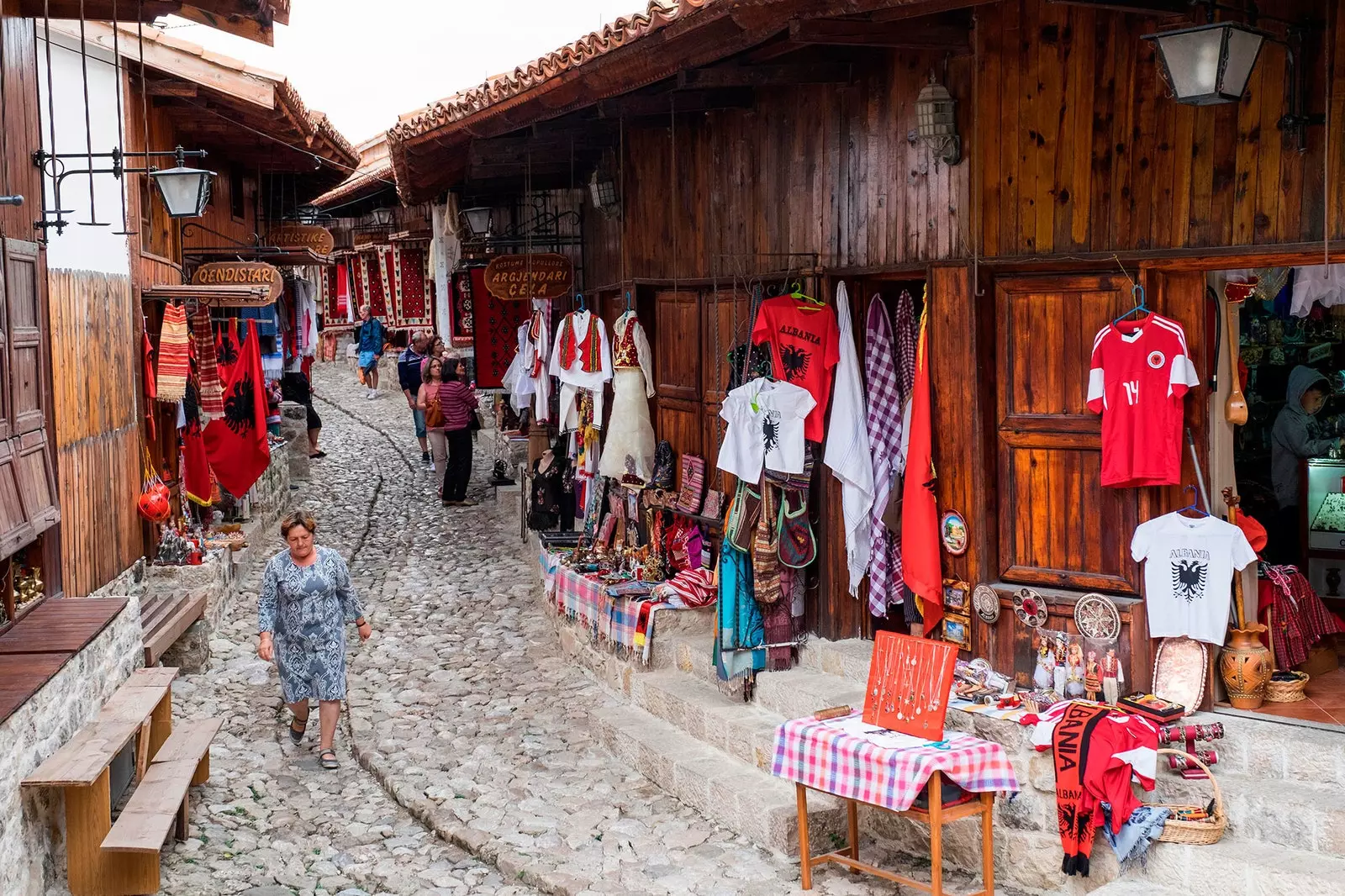
Now, the Kruja bazaar is more a compendium of souvenirs 'made in China'
In the middle of the stalls stands out a white minaret : it is the mosque of the bazaar, also called Murad Bey Mosque , which was built during the Ottoman era. Although during the years of the dictatorship it closed and its minaret was destroyed, it was recovered in 1991 and today, in addition to being another of the emblems of Kruja declared a National Monument , is one more reason to add to the reasons why a getaway to this city in the mountains is definitely worth it.
**Albania, with its history, its myths and its beautiful enclaves, never ceases to amaze. **
